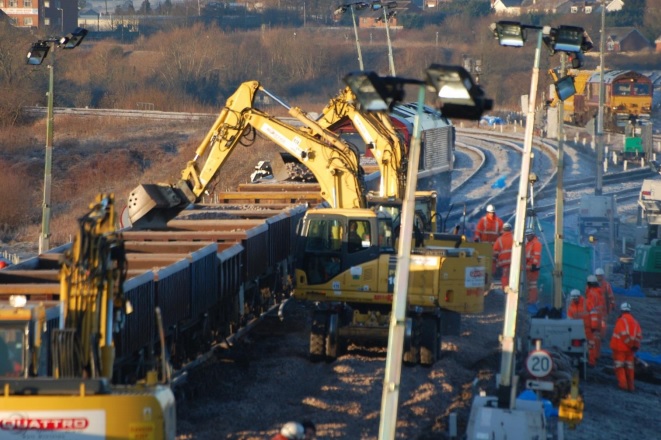
In Augmented Reality, Virtual Reality and Mixed Reality News
March 2, 2020 – Network Rail, which owns and runs the UK’s rail infrastructure, has recently issued a periodic indicative notice (PIN) in order to gather an understanding of what the market has to offer in the area of extended reality (XR) technology, virtual reality (VR), augmented reality (AR) and mixed reality (MR) for the training of its on-track plant operators and machine controllers.
Network Rail states that it has a requirement to ensure its staff are appropriately trained and maintain a set level of competency. At present, training and competency assessment for the company’s on-track plant is undertaken using the actual physical equipment in an operational environment.
However, Network Rail states that this current approach is time consuming and places trainee and instructors’ safety at risk. Furthermore, reassessment of competency is difficult to undertake, and competency can only be tested in situations where it is safe to do so. Network Rail has therefore expressed its interest to identify a solution to enable a more cost effective and safe way of training and assessing competence of on-track plant. As a result, the company is looking at the application of Extended Reality Technologies to enhance the training and competency assessment for on-track plant operators and machine controllers.
The information that is gathered will assist Network Rail with the development of its extended reality training requirements before potentially going out to tender. Interested parties will have the opportunity to engage with Network Rail and present their views and potential solutions.
Solutions should:
- Be able to accurately reflect the type, controls and layout of a range of on-track plant used by Network Rail and its contractors;
- Make use of extended reality technology so training and assessment can occur in a safe environment removed from the operational railway;
- Interface with Network Rail’s competency management systems (for training records, the company uses Oracle);
- Be able to handle a range of real life and customised scenarios based on the requirements of the criteria for competency for a range of on-track plant;
- Facilitate hazard perception/awareness.
The operation of on-track plant in a railway environment requires multiple roles to work together. As such the solution should also allow for a multi-user experience, wherein more than one person will be able to interact in the same extended reality environment at the same time, for instance the operator (driver) of the on-track plant and the controller (observer/look-out).
Network Rail has stated that it is keen to engage with organisations/suppliers with experience in the use of extend reality technology for training purposes in an industrial environment. Organisations/suppliers do not need prior experience of working in the rail sector but should be able to demonstrate how their solution would be relevant to a rail environment, particularly with a focus on safety and in alignment with Network Rail’s safety vision; “Everyone Home Safe, Every Day.”
The company has been carrying out initial market testing over a 4-week period. Companies that still wish to express an interest can register via a Demographix survey.
The deadline for all responses to the survey is 15:00 GMT on Friday March 6, 2020.
Following on from a review of the responses submitted, Network Rail may then invite suppliers to a ‘discovery day’ to provide a 30-minute presentation to its representatives. The date and location will be provided in due course. Any company missing the PIN deadline, will not be invited to present.
Network Rail has issued the PIN solely for the purpose of conducting pre-procurement market engagement via a request for information and does not constitute any commitment by the company to undertake any procurement in the future. However, the fact that Network Rail has already highlighted some of the limitations to its current approach for training and competency assessment, indicates that a change to these procedures would be more than likely. It would seem that an XR-based approach to allow for classroom-based training would seem like a very logical next step for the company to take in order to remove its staff directly out of harm’s way and away from some of the risks associated with being on-track.
The company has already dipped its toe into the augmented reality domain, with the release of an app that enables passengers to use AR to see replacement footbridges at stations by providing 3D visualisations of planned buildings in-situ.
For more updates on any of Network Rail’s possible future XR-related contracts, please subscribe to Auganix’ weekly newsletter.
Image credit: Network Rail
About the author
Sam is the Founder and Managing Editor of Auganix. With a background in research and report writing, he has been covering XR industry news for the past seven years.




